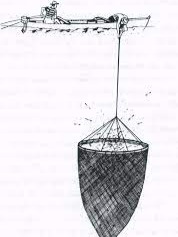A Hawaii Artist discovers beauty and more in Island Sourced Materials!
- Amy Christmas

- Apr 27, 2021
- 2 min read
Updated: Jun 18, 2021
"Kolomona", Scrambled Egg Plant-Senna surattensis
-4 Things you may not know about this Kauai plant

1. What is it? Kolomona is an evergreen tree belonging to the bean family. It typically reaches no more than 20-25’tall and about the same width but can be utilized as a hedge also. Its leaves are arranged alternately, as well as pinnately compound. Each green leaf is 3-7” long and made up of 8-10 pairs of leaflets. Its bark is greyish brown and smooth. Its flowers are 5 petaled, yellow and are produced all year in abundant racemes of 10-15 flowers each with are followed by a narrow 3” long papery dark maroon-brown seed pod. It is one for full sun, is tolerant of most soil types and is tolerant of drought, sogginess, and some salt. It is considered a weed and got its name Scrambled Egg Plant because the flower clusters look just like you guessed it-scrambled eggs. It is considered to be an invasive pest and not encouraged to plant it. It grows at lower elevations. Also a great food source for the Sleepy Orange butterfly
2. Where did it come from? Scrambled Egg Plant is native to Australia and Southeast Asia. It was originally used as a wind break or hedge. Young leaves can be cooked and eaten and the roots are used medicinally in India where it is widely grown. Introduced to Hawaii post Captain Cook, in the 1800’s, it was known to have naturalized by 1871. The Kolomana flowers were used to make let and the branches bent to make Opelu fishing nets instead of the traditional Ulei. This plant now grows in the U.S. in Florida, California, Texas, Puerto Rico, and the Bahamas. It is present in much Oceania, Africa, and Asia.
Planted as an ornamental border plant which provided shade, shelter and used a windbreak.
3. When is the best time for collecting?
We collect them as the pods appear. Since they flower and fruit all year, there is no specific season dedicated to collecting. We collect them when they are fully mature, not green.. They are stored in open containers indefinitely.
4. How are the collected plant parts used?
I found the use of the Kolomana as a support ring for the net used in traditional fishing nets fascinating. We use the pods on both our baskets and pouches. As a decorative element for its unique texture and appearance.
*Amy is a University of Hawaii Certified Master Gardener Emeritus, has a Bachelor of Science-Landscape Horticulture degree from Ohio State, has been a volunteer tour guide at NTBG, and is a self-proclaimed "plant nut"! She and her husband Ron have been making and selling their baskets for more than 20 years.






















Comments